
Calliandra is a genus of flowering plants in the pea family, Fabaceae, in the mimosoid clade of the subfamily Caesalpinioideae. It contains about 140 species that are native to tropical and subtropical regions of the Americas.

Pouteria is a genus of flowering trees in the gutta-percha family, Sapotaceae. The genus is widespread throughout the tropical Americas, with outlier species in Cameroon and Malesia. It includes the canistel, the mamey sapote, and the lucuma. Commonly, this genus is known as pouteria trees, or in some cases, eggfruits.

Bignonia is a genus of flowering plants in the family Bignoniaceae. Its genus and family were named after Jean-Paul Bignon by his protégé Joseph Pitton de Tournefort in 1694, and the genus was established as part of modern botanical nomenclature in 1753 by Carl Linnaeus. Species have been recorded from the southern USA, Central to most of South America.

Leucaena is a genus of flowering plants in the mimosoid clade of the subfamily Caesalpinioideae of the family Fabaceae. It contains about 24 species of trees and shrubs, which are commonly known as leadtrees. They are native to the Americas, ranging from Texas in the United States south to Peru. The generic name is derived from the Greek word λευκός (leukos), meaning "white," referring to the flowers.

Iresine is a genus of flowering plants in the family Amaranthaceae. It contains 20 to 25 species, all of which are native to the American tropics. The generic name is derived from the Greek word εριος (erios), meaning "wooly", referring to the trichome-covered flowers. Bloodleaf is a common name for those species that have colored foliage, and these are often cultivated as ornamental plants. Some species are additives to versions of the hallucinogenic drink ayahuasca.

Centrosema, the butterfly peas, is a genus of American vines in the legume family (Fabaceae). It includes 44 species, which range through the tropical and warm-temperate Americas from the southern United States to northern Argentina. Species include:

Pithecellobium is a genus of flowering plants in the family Fabaceae. It includes approximately 23 species from the tropical Americas, ranging from Mexico to Peru and northern Brazil, including the Caribbean Islands and Florida.
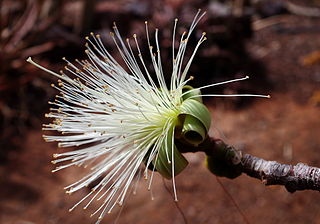
Pseudobombax is a genus of flowering plants in the subfamily Bombacoideae of the family Malvaceae.

Ladenbergia is a genus of plant in the family Rubiaceae.
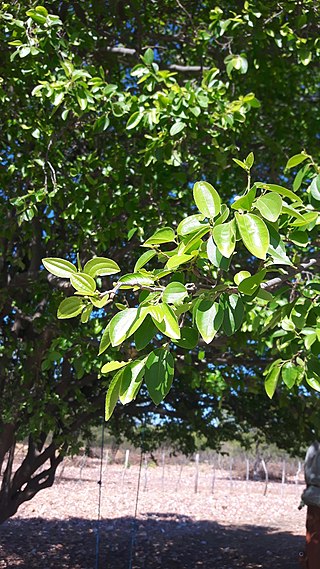
Sarcomphalus is a genus of plants in the family Rhamnaceae.

Simira is a genus of plants in the family Rubiaceae. The genus was first published by French pharmacist and botanist Jean Baptiste Christophore Fusée Aublet in Hist. Pl. Guiane vol.1 on page 170 in 1775.
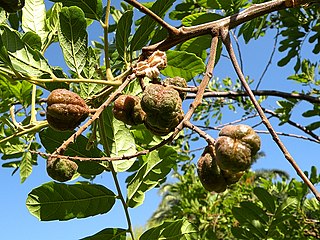
Cupania is a genus of flowering plants in the family Sapindaceae. It includes 58 species native to the tropical Americas, ranging from Mexico and south Florida through Central America, the Caribbean, and South America to northern Argentina.

Amaioua is a genus of flowering plants in the family Rubiaceae. It was first described by Jean Baptiste Aublet in 1775. The genus is native to tropical America from southern Mexico to Brazil, including Cuba and Trinidad.
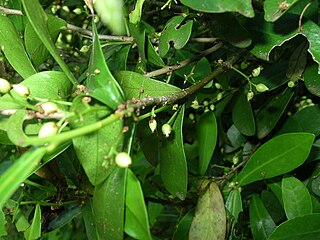
Daphnopsis is a plant genus in the family Thymelaeaceae. There are 50 to 65 species distributed in the Neotropics. They are shrubs and small trees with tubular or bell-shaped flowers. Individuals are dioecious, with male and female flowers produced on separate trees.
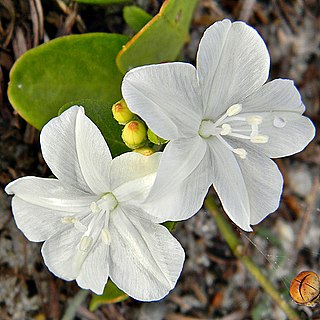
Jacquemontia is a genus of plants in the morning glory family Convolvulaceae. Species in this genus are commonly known as clustervine.
Morisonia is a genus of flowering plants in the family Capparaceae, found across the Americas from the United States to Argentina. They are typically shrubs or small trees. The genus was recently enlarged with New World Capparis species due to existing taxonomic instability.

Trattinnickia is a genus of flowering plants belonging to the family Burseraceae. It is in the Canarieae subfamily.
Pedersenia is a genus of flowering plants belonging to the family Amaranthaceae.
Peltaea is a genus of flowering plants belonging to the family Malvaceae.
Pseudomiltemia is a genus of flowering plants belonging to the family Rubiaceae.















